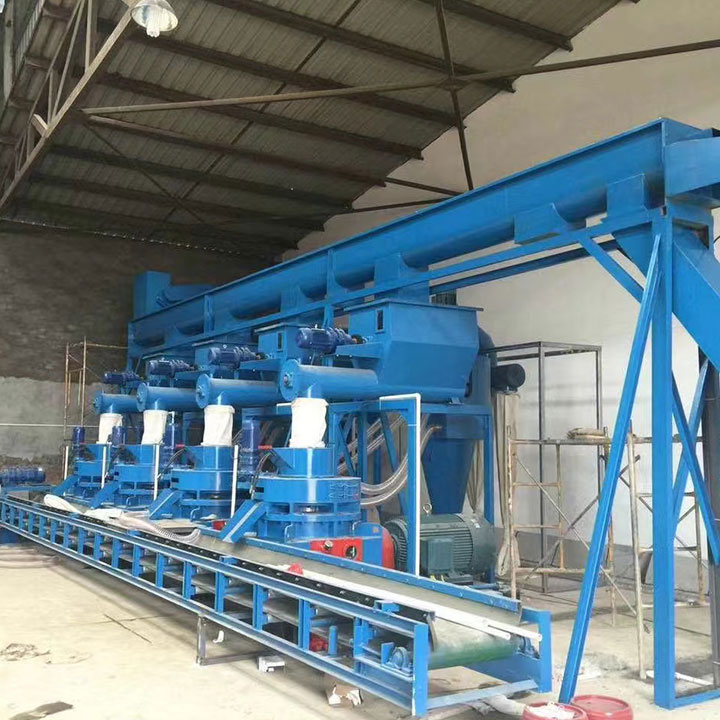How Can a Solid Waste Pellet Machine Help Transform Waste into Renewable Energy?
2024-12-21
As the world faces mounting waste disposal challenges, the need for sustainable solutions has never been more urgent. One such solution gaining attention is the solid waste pellet machine, a powerful tool in converting waste materials into valuable, eco-friendly resources. But how exactly does this technology work, and why is it becoming essential in the fight against pollution and energy depletion? Let’s explore the benefits and applications of solid waste pellet machines.
1. What Is a Solid Waste Pellet Machine?
A solid waste pellet machine is an advanced piece of equipment designed to compress various types of waste, such as municipal solid waste, agricultural residue, and industrial by-products, into compact pellets. These pellets can be used as a renewable energy source, helping to reduce waste while providing an eco-friendly alternative to fossil fuels. The machine uses heat, pressure, and mechanical force to transform waste materials into small, uniform pellets that can be used for heating, power generation, or as animal feed.
2. Why Is It Important to Convert Solid Waste into Pellets?
The conversion of solid waste into pellets offers multiple advantages:
- Waste Reduction: Reduces the volume of waste sent to landfills, helping to mitigate the global waste crisis.
- Energy Generation: The pellets produced can be burned as biomass fuel, providing a sustainable source of energy for heating or electricity.
- Recycling of Resources: Allows for the repurposing of various waste types, including plastic, paper, wood, and agricultural waste, turning them into useful products.
- Environmental Impact: Reduces greenhouse gas emissions by decreasing reliance on fossil fuels and preventing the open burning of waste materials.
3. How Does the Solid Waste Pellet Machine Work?
The process of converting solid waste into pellets involves several steps:
- Step 1: Collection of waste materials, which can include organic waste, plastics, paper, or agricultural residues.
- Step 2: Preprocessing, where the waste is sorted, cleaned, and sometimes shredded to ensure uniformity.
- Step 3: Drying, where the moisture content is reduced to optimal levels to facilitate pelletization.
- Step 4: Pelletization, where the dried waste is fed into the pellet machine, which uses pressure and heat to form the pellets.
- Step 5: Cooling, after which the pellets are hardened and ready for use or sale.
4. What Are the Benefits of Using Solid Waste Pellet Machines?
There are numerous benefits to using solid waste pellet machines in waste management and energy production:
- Cost-Effective: Reduces waste disposal costs and provides a low-cost energy source.
- Energy Efficiency: Converts waste into high-calorific pellets that can be used for heating or electricity generation, reducing reliance on non-renewable resources.
- Sustainable: Promotes recycling and reduces the environmental impact of landfills and incinerators.
- Waste Valorization: Allows businesses and municipalities to turn their waste into valuable products, such as fuel or animal feed.
5. Where Are Solid Waste Pellet Machines Used?
Solid waste pellet machines are used in a variety of sectors:
- Municipalities: To manage urban waste and create renewable energy.
- Agriculture: To process agricultural waste and produce biomass pellets for energy or animal feed.
- Industrial Plants: To recycle industrial by-products and waste, reducing environmental impact and energy costs.
- Power Plants: To generate renewable energy from solid waste pellets, providing a sustainable energy source for communities.
6. What Are the Challenges and Future Opportunities?
While solid waste pellet machines offer great potential, they are not without challenges:
- Initial Investment: The machines can be costly, which may deter small businesses or communities from investing in the technology.
- Material Quality: The efficiency of the pelletization process depends on the quality and type of waste material used, requiring proper sorting and preprocessing.
- Market Demand: The success of pellet production is also dependent on the demand for biomass fuel, which can fluctuate.
However, future opportunities abound in advancing technology, improving the efficiency of waste sorting, and creating a broader market for biomass pellets as an alternative energy source.
Final Thoughts
A solid waste pellet machine offers a promising solution to the world’s growing waste problem while contributing to sustainable energy production. By transforming waste into valuable resources, these machines help close the loop in waste management, reduce environmental impact, and promote the circular economy.



